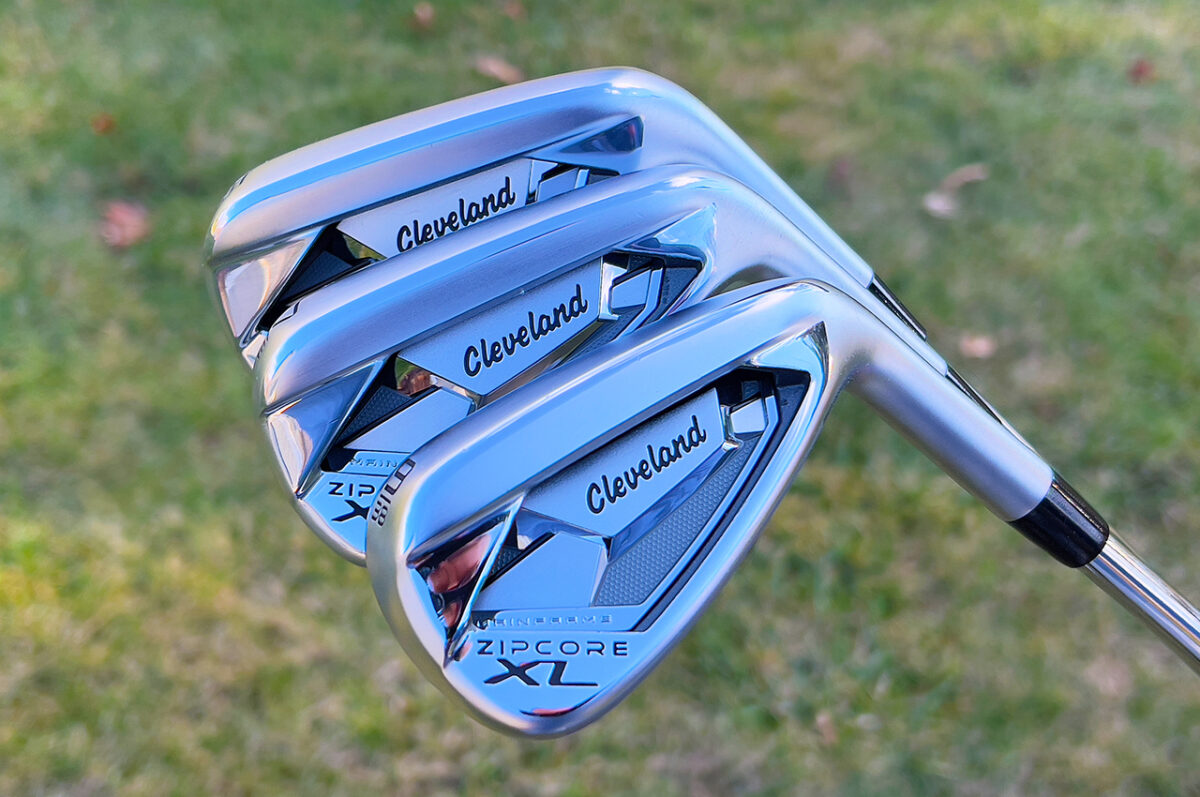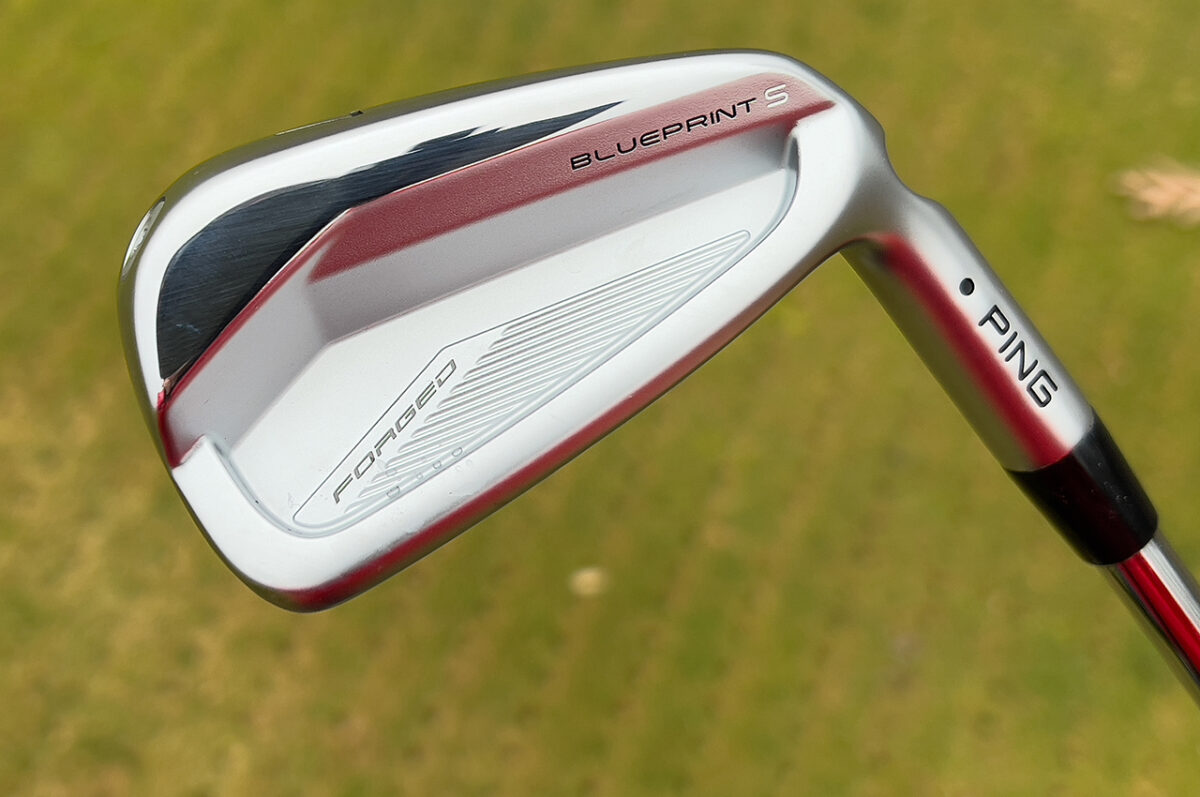Gear: Cleveland ZipCore XL irons.
Price: $899.88 (7 clubs) with KBS Tour Lite steel shafts and Lamkin Crossline 360 grips; $999.99 with UST Mamiya Helium Nanocore 60 graphite shafts.
Specs: Cavity-back designed stainless steel heads with stainless steel faces. Available 4-iron through sand wedge.
Available: January 19, but available via pre-order NOW
Who It’s For: Golfers with a handicap ranging from eight to 18 who want a traditional cavity-back iron designed to deliver more distance and consistency.
The Skinny: A unique face design combined with a surface-roughening treatment that changes throughout the set helps the Cleveland ZipCore XL irons produce more ball speed and more spin consistency through the bag.
The Deep Dive: One of Cleveland Golf’s sister brands under the Dunlop Sports umbrella, Srixon, makes several different cavity-back irons, including last season’s ZX4 Mk II, ZX5 MkII and the ZX7 Mk II, but if you perused Cleveland’s website recently you would not find clubs like those. Instead, the brand focused on hollow-bodied game-improvement irons like the Launcher XL and the Launcher Halo XL that dropped two years ago.
Cleveland used to make several irons for mid-handicap and even low-handicap golfers (Vijay Singh and David Toms won majors using Cleveland irons) and for 2024 Cleveland is re-entering the game-improvement category with the ZipCore XL.
[afflinkbutton text=”Shop new Cleveland ZipCore XL irons” link=”https://worldwidegolfshops.pxf.io/daJg2j”]

In the address position, the ZipCore XL showcases a moderately-thin topline. However, the extra length in the blade and the offset hint that this club is made to help golfers overcome shortcomings in their swing and reduce the penalty for mis-hits.
To help golfers generate more ball speed and distance, engineers gave the ZipCore XL irons a MainFrame face. It is a series of channels that are milled into the inner-facing side of the face of the 4-iron through 7-iron. They allow the hitting area to flex more efficiently, while weight pads help to lower the center of gravity location and encourage higher-flying shots.
[afflinkbutton text=”Shop new Cleveland ZipCore XL irons” link=”https://worldwidegolfshops.pxf.io/daJg2j”]

The ZipCore XL irons also feature the same ZipCore design found in many of Cleveland’s popular wedges. Instead of steel, designers fill the lower portion of the hosel area with a lighter material. This is the first time Cleveland is bringing the technology to an iron, and it helps to make the heel area lighter, so the ideal hitting area shifts in the center of the face.
To help players get consistent spin, Cleveland has added a face-blast treatment called HydraZip that changes throughout the set. In the long irons (4-7), the HydraZip face-roughening treatment is rougher to reduce spin and encourage more carry. In the short irons and wedges (8-SW), the HydraZip treatment is less aggressive to help golfers get more spin and stopping power on the greens.

The V-shaped sole should help golfers who have a steep angle of attack work the ZipCore XL irons through the turf more efficiently. Golfers will also benefit from an 8-gram weight Cleveland adds under the top of the grip. Referred to as Action Mass CB, the weight counterbalances the head of the club and makes it feel lighter when you swing.
[afflinkbutton text=”Shop new Cleveland ZipCore XL irons” link=”https://worldwidegolfshops.pxf.io/daJg2j”]




